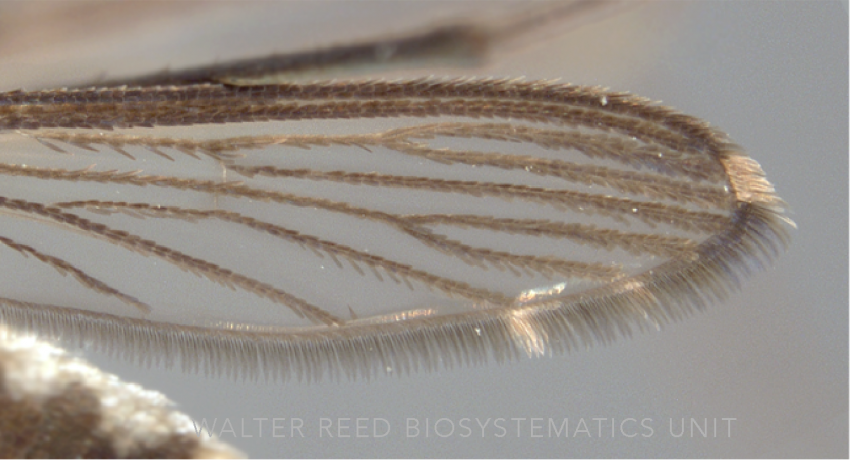ORIENTAL REGION
Generic abbreviation: Km.
Type species: Topomyia decorabilis Leicester
Etymology: Tran Thi Bach Kim (wife of Vu Duc Huong)
The genus Kimia comprises five species—Km. decorabilis (Leicester), Km. imitata (Baisas, 1946), Km. miyagii (Toma & Mogi, 2003), Km. nemorosa (Gong) and Km. suchariti (Miyagi & Toma). Kimia species have distinctive broad silver scale patches on the antepronotum, pleuron and sternum. Like Malaya and Topomyia species, Kimia have a distinctive median stripe of silvery white scales down the center of the scutum.
DIAGNOSTIC CHARACTERS (Click photos to view; mouse over and click large photo to zoom in.)
ADULT (illustrated): Head: Vertex with silvery scales. Thorax: Silvery scales on posterior antepronotum, pleuron, C-I–III and abdominal sternum; silvery, flat, broad scales in two rows along midline of scutum; scutellar lobes with broad, dark scales. Wing: Upper calypter lacking setae. Abdomen: Terga dark-scaled; sterna with silvery scales, IX-S without setae and scales.
LARVA (not illustrated): Head: Maxillary brush modified into an articulated rigid bundle; maxillary apical tooth stout. Terminal segments: Comb without comb plate; comb scales in a single irregular row; siphon without pecten, with dorsal and ventral double rows of setae along entire length; seta 4-X multi-branched, single.
TAXONOMIC KEYS
None
Exemplar DNA sequences
None
BIONOMICS
Immatures
Kimia larvae are bamboo-associated, found in insect bore holes in standing bamboo internodes, and rainwater collections in bamboo stumps. The maxillae of Kimia larvae are modified for grasping, suggesting predacious feeding behaviors. During the link-rearing of the holotype of Km. suchariti, the larva reportedly captured and ate several Armigeres and Tripteroides larvae.
Adults
Very little is known on the adult biology of Kimia species. Adults have never been captured in the wild, and are known only from larval rearings. That they are not attracted to human bait or light traps suggests (like the closely related Malaya and Topomyia), Kimia most probably do not blood feed. Given the predacious nature of the larvae, it is likely that adults are autogenous.
*Associated pathogens: This list reports bacteria, viruses, and parasites recovered from, or experimentally passed through this species, and does not imply field vector status.
IMPORTANT REFERENCES (full citations below)
Harbach, Vu & Kitching 2007 (taxonomy, phylogeny, classification, bionomics)
VALID SUBGENERA
None
CURRENT GENERIC SYNONYMS
None
CITED REFERENCES
Harbach, R.E., Huong, V.E., & Kitching, I.J. (2007b). Systematics of Kimia, a new genus of Sabethini (Diptera: Culicidae) in the Oriental Region. Proceedings of the Entomological Society of Washington, 109(1), 102–120.
CITE THIS PAGE
Walter Reed Biosystematics Unit (Year). Kimia genus page. Walter Reed Biosystematics Unit Website, http://wrbu.si.edu/vectorspecies/genera/kimia, accessed on [date (e.g. 03 February 2020) when you last viewed the site].







